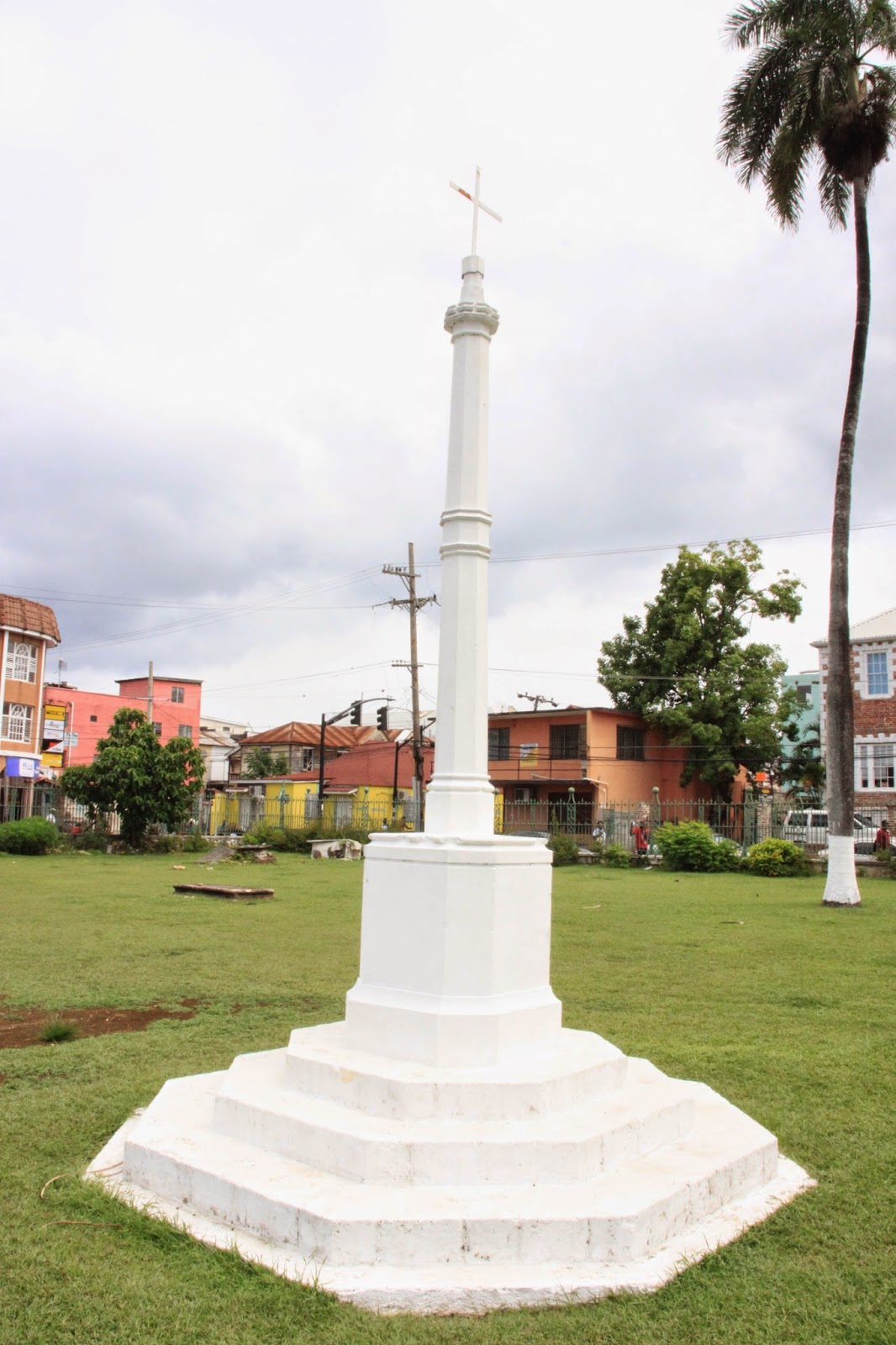Memories Of The Great War Etched In Time
 |
| Memorial to Jamaican soldiers who died in WW1 at Montego Bay Parish Church |
Built in 1921, the Calvary, which has an octagonal base and column, in England, on the four panels at the base are inscribed the names of those who fell.
"For me, World War I is personable, in that, if we search our family histories," said Captain Stacy-Marie Dehaney, force curator, Jamaica Defence Force, cleaning off a film of lime to get a better look at the names etched on the stone, "there is a good chance that you could come across a surname like your own in your parish," she remarked.
There is nothing ostentatious about the memorial, a clean, octagonal pillar, a tribute to human endurance, spirit, resilience, and grit, but in its simplicity lie the poignant memories - 10,000 Jamaicans left the island to fight in the Great War, 1,000 lost their lives.
Ninety kilometres east of Montego Bay, a similar structure stands tall in the yard of the St Ann Parish Church, the etched names of the fallen soldiers faded, but withstanding the elements.
bound by common cause
"Many (soldiers) didn't, at that time, have any knowledge of where they were going," Dehaney said.
These men were from a wide cross section of the society, bound by a common cause. "Together, soldiers from the West Indies represented sons of gentry and sons of labourers," author Frank Cundall wrote in Jamaica in the Great War.
"There were lawyers, doctors, engineers, farmers, carpenters, clerks, blacksmiths, shoemakers, tailors, mason, printers, builders, coachmen and grooms. The troops were trained in English camps - their long spells of work broken by competitive games of cricket and football."
 |
| Piece of ancient mosaic, is embedded in the floor of Garrison Church at Up Park Camp, Kingston |
"A Turkish shell fired at a British entrenchment in a synagogue at Ain Duk, a few miles from Jericho (in West Bank)," informed Major Denston Smalling, chaplain of Garrison Church.
The bombing uncovered three pieces of mosaic inscribed in Judeo Aramaic, and one of these was brought to Jamaica by Captain A.M. Furber of the West India Regiment.
As years have passed, like mosaic engraved in Garrison Church, memories of Jamaica's role in the Great War are frozen and embedded, living in the modern world but bubble-wrapped in time.
 |
| Altar and stained glass mosaic in memory of WW1 soldiers at Garrison Church, Up Park Camp, Kingston. |
"It makes you think about choices and adventure in a different time we can't relate to now," Dehaney remarked.
A century ago, at the end of the war, the memories were fresh and the sacrifices of the soldiers were engraved in monuments erected in Morant Bay; war memorials were hung at Manning's School, Savanna-la-Mar, Beckford and Smith School, Spanish Town, and Mico Training College (now The Mico University College), Kingston.
An obelisk, in reinforced concrete, stands in the compound of Wolmer's Boys' School in memory of old students who lost their lives in the war.
 |
| Obelisk at Wolmer's Boys' School |
A century is a long time in history, and memories fade, but these memorials, which have withstood time, and as resilient as the men who they honour, stand tall.
A verse from Abide With Me, hymn penned by Henry Francis Lyte, captures that spirit of these men, in foreign land - "Hold thou thy cross before my closing eyes; Shine through the gloom, and point me to the skies; Heaven's morning breaks, and earth's vain shadows flee; In life, in death, O Lord, abide with me ..."



Comments
Post a Comment